#Robert Stafford
Text
Vermont Governor DILFs





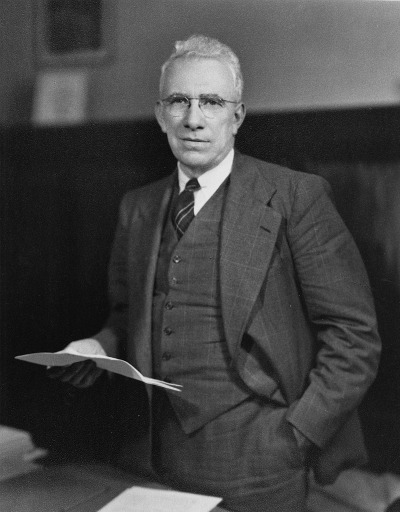
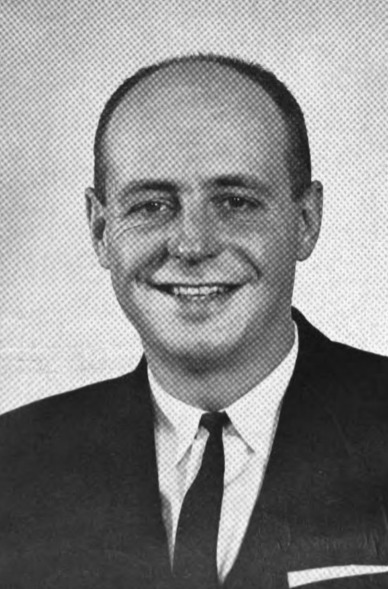

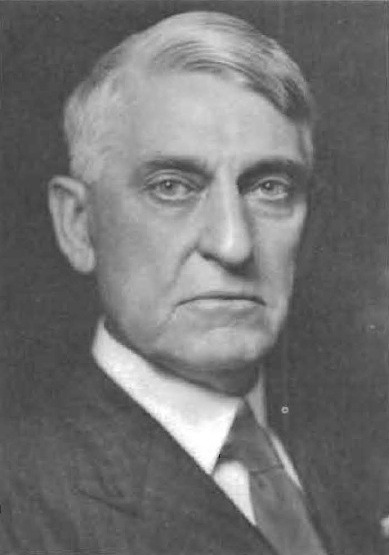
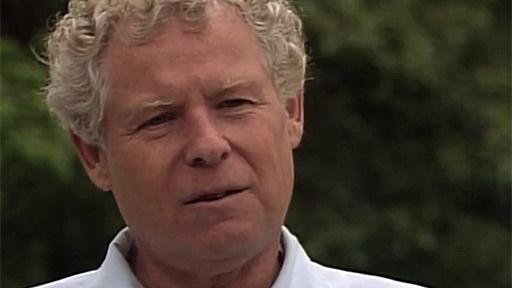



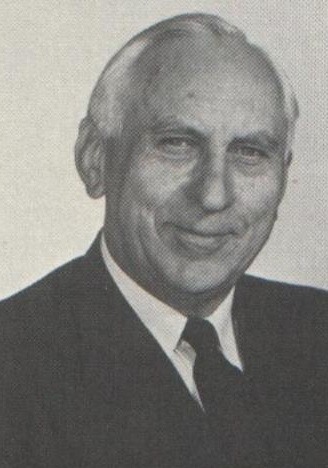
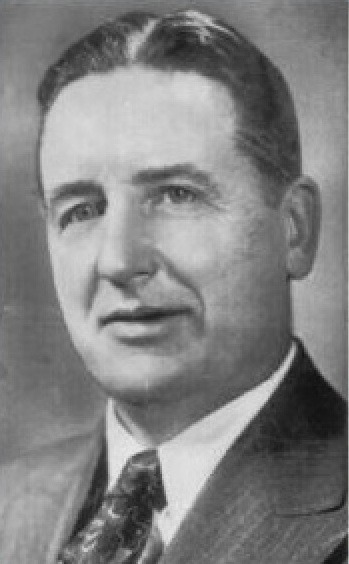







Peter Shumlin, Jim Douglas, Phil Scott, Howard Dean, Deane C. Davis, George Aiken, F. Ray Keyser Jr., Franklin S. Billings, Charles Manley Smith, Richard A. Snelling, Harold J. Arthur, Horace F. Graham, John A. Mead, Joseph B. Johnson, Lee E. Emerson, Thomas P. Salmon, William Henry Wills, Mortimer R. Proctor, Ernest W. Gibson Jr., Robert Stafford, Philip H. Hoff, Allen M. Fletcher
#Peter Shumlin#Jim Douglas#Phil Scott#Howard Dean#Deane C. Davis#George Aiken#F. Ray Keyser Jr.#Franklin S. Billings#Charles Manley Smith#Richard A. Snelling#Harold J. Arthur#Horace F. Graham#John A. Mead#Joseph B. Johnson#Lee E. Emerson#Thomas P. Salmon#William Henry Wills#Mortimer R. Proctor#Ernest W. Gibson Jr.#Robert Stafford#Philip H. Hoff#Allen M. Fletcher#GovernorDILFs
23 notes
·
View notes
Text
King Tut made his first appearance in the Batman episode that aired on April 13, 1966. King Tut was the first villian completely created for the show. While Zelda the Great was technically a new character, her story completely mirrored a comic starring a different villian. ("The Curse of Tut", Batman, TV event)

#nerds yearbook#real life event#first appearance#batman#dc#adam west#king tut#robert c dennis#earl barret#bob kane#william dozier#lorenzo semple jr#robin#burt ward#charles r rondeau#alan napier#alfred pennyworth#neil hamilton#commissioner gordon#jim gordon#james gordon#stafford repp#chief o'hara#madge blake#mrs cooper#victor buono#ziva rodann#nefertiti#don red barry#grand vizier
21 notes
·
View notes
Text
“…The Anglo-Saxon era is often thought of as having been a golden age for women. Since the late eighteenth century, it has been a commonplace that women in England had better rights before the Norman Conquest than they did afterwards, and were held in higher esteem by society. Before 1066, said one eminent historian in the mid-twentieth century, men and women enjoyed ‘a rough and ready partnership’. As so often with golden ages, however, this picture rests on a selective reading of very limited and debatable evidence. One of its principal props is an account of German women written by the Roman historian Tacitus towards the end of the first century AD. These women, claimed Tacitus, were virtuous, frugal and chaste, and supported their sons and husbands by encouraging them to acts of valour. But this was simply a Roman praising ‘barbarian’ society in order to criticize his own. German women were portrayed as laudable because, unlike their Roman counterparts, they did not conduct adulterous affairs or waste their time at baths and theatres. The reality, unfortunately, seems to be that the status of women in first-century Germany and Anglo-Saxon England was no better than it was in later centuries.”
-Marc Morris, "Anglo-Saxons: The History of the Beginnings of England, 400-1066” / Pauline Stafford, "Women and the Norman Conquest"
Anglo-Saxon England has thus been a Golden Age variously of women's domestication, women's legal emancipation, women's education and women's sexual liberation. The length of a tradition which has changed so fundamentally over time is no guarantee of its veracity. A cursory view of a range of evidence from either side of the 1066 divide casts immediate doubt on the idea of a brutal Norman ending of the Golden Age. The raw statistics of Domesday, for example, suggest a different picture of England on the eve of the Norman arrival. No more than five per cent of the total hidage of land recorded was in the hands of women in 1066. Of that five per cent, 80-85% was in the hands of only eight women, almost all of them members of the families of the great earls, particularly of earl Godwine, or of the royal family. By the tenth and eleventh centuries women other than the queen are virtually absent from the witness lists of the royal charters, and thus apparently from the political significance such witness lists record.”
#anglo-saxons#anglo-saxon england#norman conquest#english history#gender tag#medieval#I don't necessarily agree with Stafford about Henry I#He did name his daughter Matilda his heir but it's not really as simplistic as she makes it seem#We know he remarried soon after his son's death to a young woman who he travelled extensively with her to try and conceive another son#It was only after 5 years when it became clear that he and his second queen weren't having kids that he nominated Matilda#And even then he never shared authority with her (including authority in her own dower lands that HE gave her)#Also as multiple historians have pointed out - while Matilda was his immediate heir it's highly likely that he hoped to live long enough#to directly transfer the kingdom to his eldest grandson#Even some of Matilda's own supporters seem to have viewed the situation in a similar manner - for example the Gesta Stephani states that#Robert of Gloucester viewed Henry Plantagenet as his grandfather's true heir#ie: many contemporaries probably unfortunately viewed Matilda as a 'transitional point' so to speak#So while I do think that Henry I should be remembered as someone who tried to pass the throne to his daughter#I don't really think the picture was as straightforward or as empowering (in a sense) as Stafford paints it as#The reality was much more complex and frustrating and typical of its times#And I do think it does Matilda a disfavour to overlook that
3 notes
·
View notes
Photo










jennyouin
Happy opening day! #AvatarTheWayOfWater is officially in theatres!!! Congratulations everyone who had a hand in creating this film!
Huge thank you to @jamescameronofficial @jonplandau Maria Battle-Campbell and @garrettxwarren for having me on this one in a lifetime opportunity.
Here’s a few moments from our Los Angeles Premiere. Love you all 💙🌊
#avatar#avatarthewayofwater#avatar2
#Avatar: The Way of Water#social media#movie premiere#Jenn Stafford#Jack Champion#Trinity Bliss#Bailey Bass#Duane Wichman Evans Jr.#Kevin Dorman#Alicia Vela Bailey#Jamie Landau#Courtney Rosemont#Kacie Borrowman#Robert Okumu
11 notes
·
View notes
Text
Does Gabriel Cannon know that I want him carnally? I will also accept Robert Lamar Stafford Jr.
#he literally is jsut the best person ever#and jr is so fucking stupid in the best way ever i need him#this show is magnificent celebrity pr#it warms my entire soul that lil nas x hAS HIM as a sibling and how did they get me like this#gabriel cannon#robert lamar stafford jr#jr claim to fame#gabriel claim to fame#lil nas x#nick cannon#claim to fame#claim to fame spoilers#melissa on pop culture#melissa on claim to fame
5 notes
·
View notes
Text
'Newly declassified documents reveal that Gen. Leslie Groves—director of the Manhattan Project, the top-secret operation that built the atomic bomb during World War II—misled Congress and the public about the effects of radiation. He did so initially out of ignorance, then denial, and finally, willful deception.
The documents also show that some scientists in the project, including J. Robert Oppenheimer, director of the Los Alamos lab where the bomb was first tested, kept mum about Groves’ lie rather than dispute him or confront the general directly.
The cache of documents—the latest in a series of once secret and top-secret material about the A-bomb obtained over the years by the National Security Archive, a private research organization at George Washington University—was released on Monday, within days of the 78th anniversary of the bombings of Hiroshima and Nagasaki and in the wake of the release of Oppenheimer, the wildly (and deservedly) successful film that has grossed $500 million since its hit theaters just three weeks ago.
One of the new documents the archive obtained is a memo by four scientists, titled “Calculated Biological Effects of Atomic Explosion in Hiroshima and Nagasaki,” dated Sept. 1, 1945. (The bombs were dropped on Aug. 6 and 9 of that year.) Until this memo was written, it had been assumed the A-bomb’s victims would be killed by its blast and its heat. But this memo concluded that at least some of the deaths had been caused by radioactive fallout, days or weeks after the explosions.
And yet, the day before the memo’s date, at a press conference in Oak Ridge, Tennessee, Groves said radiation had caused no deaths and that claims to the contrary—some published in Asian newspapers—were “propaganda.” In a memo to Oppenheimer, George Kistiakowsky, the Los Alamos scientist who coordinated the biological report, said that Groves had “stuck his neck out by a mile,” so he hesitated to pass the study along.
Even by then, enough was known about radiation poisoning to have made Groves stop short of dismissing the claims so strongly. The archive’s documents show that, back in April, three months before the first test of the bomb in New Mexico, medical experts with the Manhattan Project warned of a toxic “cloud” that could spew “radioactive dust” over a wide radius for “hours after the detonation.” Some urged Groves to evacuate the area around the test site, which he resisted, not wanting to attract media attention. One scientist remembered years later that Groves “sniffed” at the warning and said, “What’s the matter with you, are you a Hearst propagandist?” (Hearst was the leading newspaper chain of the day, often specializing in sensational reports.)
On July 21, five days after the test, Stafford Warren, the Manhattan Project’s chief medical officer, wrote to Groves that “the dust outfall from the various portions of the cloud was potentially a very serious hazard over a band almost 30 miles wide extending almost 90 miles northeast of the site,” adding that there was still “a tremendous amount of radioactive dust floating in the air.” (Recent studies, based on computer modeling, suggest that radioactivity from the first atomic test spread much farther, affecting 46 states and parts of Mexico and Canada.)
Yet Groves ignored Warren’s findings. On July 30, in a memo on the likely effects of an atom bomb dropped on Japan, he wrote Gen. George Marshall, the U.S. Army chief of staff: “No damaging effects are anticipated on the ground from radioactive materials.” (This was a deceptively written sentence: at the time, few thought much fallout would linger “on the ground,” but it was widely known that it could rain down from the sky and scatter across the air, which humans could breathe or soak in.)
Groves’ awareness of this danger is clear in an Aug. 25 excerpt from his diary, in which he wants to know if it’s safe to invite the press to come survey the test site (this, more than two months after the first test). One of the scientists told him that it “wouldn’t be so safe” if the journalists stood as close as 100 feet from where the bomb had gone off. Reporters did come on Sept. 11 and were given “white booties” to protect them from possible radiation.
It’s possible that, even at this point, Groves simply didn’t believe the worst about radiation. On the same day as his diary entry about inviting reporters, he had a phone conversation with a fellow officer at Oak Ridge about Japanese radio broadcasts reporting cases of radiation sickness. Groves said this was all “propaganda” and that the sickness was more likely caused by “good thermal burns.”
Still, Groves sent a team of inspectors to the two bombed cities to determine the impact of radioactivity. He wrote Gen. Marshall that casualties from radiation were “unlikely,” but the “facts” had to be established.
This makes sense. Before the bombs were dropped, most scientists assumed that blast and heat would be the dominant effects. Radiation would be a footnote; anyone who received a lethal dose of radiation would be close enough to the explosion to die from the blast or the heat.
However, as was later discovered, the A-bomb’s “secondary effects”—radiation, smoke, fire in particular—could, under certain circumstances, spread even farther than the effects of blast and heat.
As early as the first inspectors’ report—the one that Kistiakowsky at first withheld from Groves but eventually passed along to him—there was notation of “freak survivors” within the blast radius who later died of radiation sickness.
On Nov. 27, months after the memo about the biological effects of the atomic explosions in Hiroshima and Nagasaki, Stafford Warren, the project’s chief medical officer, wrote Groves with even more definitive proof. Of the roughly 4,000 patients admitted to hospitals in Hiroshima and Nagasaki, he wrote, “1300 or 33% showed effects of radiation and, of this number, approximately one-half died.”
Nonetheless, three days later, in testimony before the Senate Special Committee on Atomic Energy, Groves was asked if there was any “radioactive residue” at the two bombed Japanese cities. Groves replied, “There is none. That is a very positive ‘none.’ ”
Groves further claimed that no one in the two cities suffered radiation injury “excepting at the time that the bomb actually went off.” He added that it “really would take an accident for … the average person, within the range of the bomb, to be killed by radioactive effects.”
Finally, in a comment that sealed his reputation among his critics, Groves said that irradiated victims who died not right away, but after some time, would do so “without undue suffering. In fact,” he said, “they say it is a very pleasant way to die.”
Groves discounted, downplayed, then denied the reports about radiation sickness because, like many at the time, he thought that nuclear weapons would be the centerpiece of U.S. defense policy (as indeed they were for the next few decades) and that the American public would rebel against them if they were seen as something like poison gas—and thus beyond a moral threshold.
By this time, Oppenheimer had recently departed from Los Alamos, but he remained on government advisory boards. Like many scientists, he had underestimated the effects of radiation, but he was now well aware of the inspectors’ studies and of Groves’ false comments. Heralded as “the father of the atom bomb,” he felt blood on his hands, as he famously confessed to President Harry Truman. But he said nothing about Groves’ lies—at least not in public.
Some were not so silent. On Dec. 6, 1945, one week after Groves’ testimony, Philip Morrison, a Manhattan Project scientist who was on the team that surveyed the bombs’ damage in Japan, testified before the same committee, citing the facts about radiation, directly contradicting Groves’ blithe assurances. Morrison went on to become a professor of physics at MIT and an activist in the community of scientists—many of them veterans of the Manhattan Project—who advocated nuclear arms control and disarmament.
Maybe someday someone will make a movie about him.'
#Leslie Groves#J. Robert Oppenheimer#The Manhattan Prohect#Hiroshima#Nagasaki#Philip Morison#President Harry Truman#Senate Special Committee on Atomic Energy#Los Alamos#Stafford Warren
1 note
·
View note
Photo

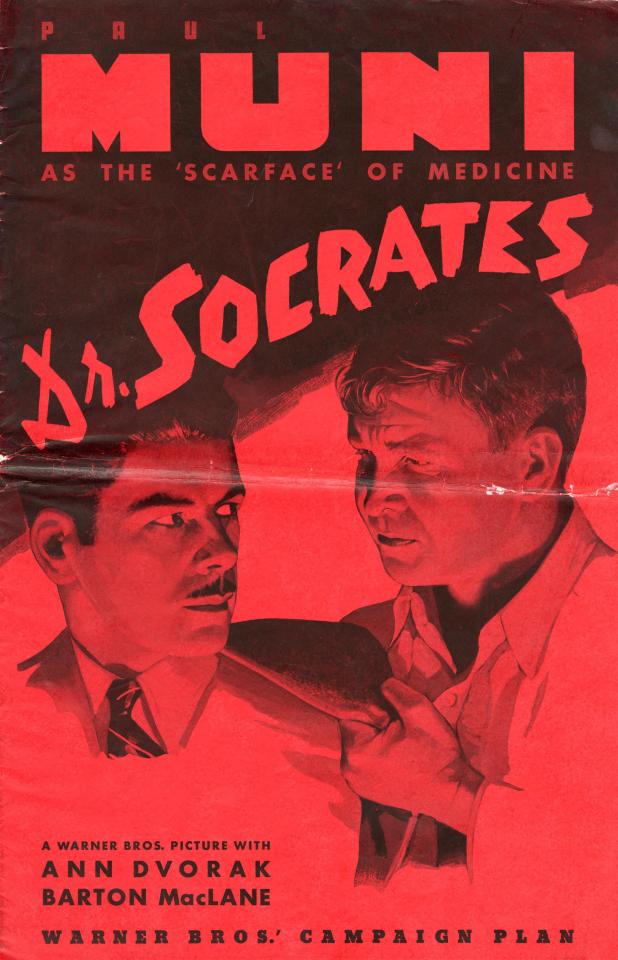
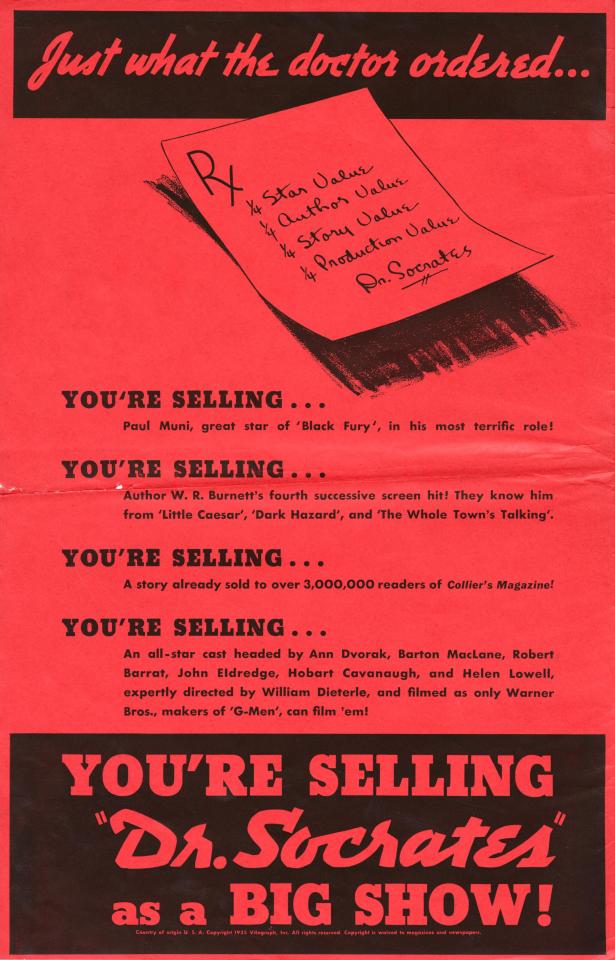
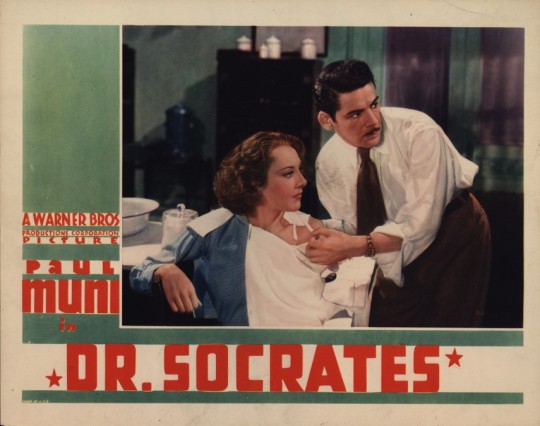

Dr. Socrates (1935) William Dieterle
February 12th 2023
#dr. socrates#1935#william dieterle#paul muni#ann dvorak#barton maclane#helen lowell#robert barrat#raymond brown#grace stafford#olin howland
1 note
·
View note
Text
Shoot A Crooked Arrow - Batman season 2
Shoot A Crooked Arrow – Batman season 2
Shoot a Crooked Arrow – The Archer (Art Carney) decides to rob from the rich, give to the poor, and pilfer Batman’s Gotham City!
(more…)
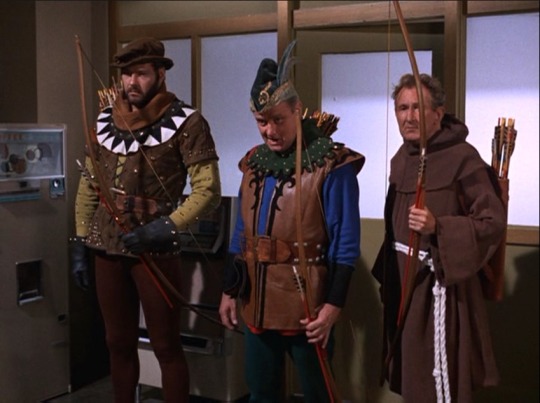
View On WordPress
#Adam West#Alan Napier#Art Carney#Barbara Nichols#Batman#Burt Ward#Doodles Weaver#Madge Blake#Neil Hamilton#Robert Cornthwaite#Stafford Repp
0 notes
Text
At the outset of H. G. Wells's The War of the Worlds (1898), Wells asks his English readers to compare the Martian invasion of Earth with the Europeans' genocidal invasion of the Tasmanians, thus demanding that the colonizers imagine themselves as the colonized, or the about-to-be-colonized. But in Wells this reversal of perspective entails something more, because the analogy rests on the logic prevalent in contemporary anthropology that the indigenous, primitive other's present is the colonizer's own past. Wells's Martians invading England are like Europeans in Tasmania not just because they are arrogant colonialists invading a technologically inferior civilization, but also because, with their hypertrophied brains and prosthetic machines, they are a version of the human race's own future.
The confrontation of humans and Martians is thus a kind of anachronism, an incongruous co-habitation of the same moment by people and artifacts from different times. But this anachronism is the mark of anthropological difference, that is, the way late-nineteenth-century anthropology conceptualized the play of identity and difference between the scientific observer and the anthropological subject-both human, but inhabiting different moments in the history of civilization. As George Stocking puts it in his intellectual history of Victorian anthropology, Victorian anthropologists, while expressing shock at the devastating effects of European contact on the Tasmanians, were able to adopt an apologetic tone about it because they understood the Tasmanians as "living representatives of the early Stone Age," and thus their "extinction was simply a matter of … placing the Tasmanians back into the dead prehistoric world where they belonged" (282-83). The trope of the savage as a remnant of the past unites such authoritative and influential works as Lewis Henry Morgan's Ancient Society (1877), where the kinship structures of contemporaneous American Indians and Polynesian islanders are read as evidence of "our" past, with Sigmund Freud's Totem and Taboo (1913), where the sexual practices of "primitive" societies are interpreted as developmental stages leading to the mature sexuality of the West. Johannes Fabian has argued that the repression or denial of the real contemporaneity of so-called savage cultures with that of Western explorers, colonizers, and settlers is one of the pervasive, foundational assumptions of modern anthropology in general. The way colonialism made space into time gave the globe a geography not just of climates and cultures but of stages of human development that could confront and evaluate one another.
The anachronistic structure of anthropological difference is one of the key features that links emergent science fiction to colonialism. The crucial point is the way it sets into motion a vacillation between fantastic desires and critical estrangement that corresponds to the double-edged effects of the exotic. Robert Stafford, in an excellent essay on "Scientific Exploration and Empire" in the Oxford History of the British Empire, writes that, by the last decades of the century, "absorption in overseas wilderness represented a form of time travel" for the British explorer and, more to the point, for the reading public who seized upon the primitive, abundant, unzoned spaces described in the narratives of exploration as a veritable "fiefdom, calling new worlds into being to redress the balance of the old" (313, 315). Thus when Verne, Wells, and others wrote of voyages underground, under the sea, and into the heavens for the readers of the age of imperialism, the otherworldliness of the colonies provided a new kind of legibility and significance to an ancient plot. Colonial commerce and imperial politics often turned the marvelous voyage into a fantasy of appropriation alluding to real objects and real effects that pervaded and transformed life in the homelands. At the same time, the strange destinations of such voyages now also referred to a centuries-old project of cognitive appropriation, a reading of the exotic other that made possible, and perhaps even necessary, a rereading of oneself.
John Rieder, Colonialism and the Emergence of Science Fiction
671 notes
·
View notes
Text
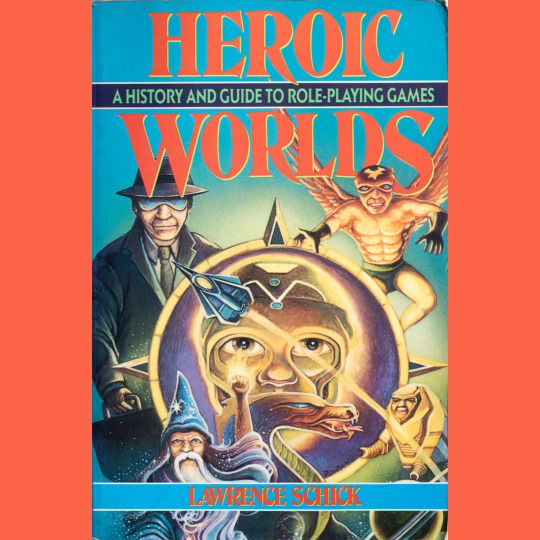
This is Heroic Worlds (1991), by Lawrence Schick (of White Plume Mountain fame).
There are a bunch of books from the ‘80s and ‘90s that attempt to catalog and review RPGs and they kind of boggle my mind (the same is true for the similar genre of print paperback tip guides for videogame). Even having lived in the pre-internet era, I don’t understand the rationale for these books from a publishing perspective. Which is not to say I don’t adore Heroic Worlds. I do! It just seems…improbable.
The book essentially amounts to an index of every RPG product produced from 1974 to 1990. It feels a tiny bit like an Overstreet Comic Book Price Guide (another publication I’ve always been baffled by), except without the prices (though there is a small section on collecting — the advice still rings true today, primarily: be patient!). The listings are interrupted periodically with short essays by a rogues gallery of RPG designers: Gary Gygax, Dave Arneson, Greg Stafford, Steve Jackson, Jennell Jaquays, Michael Stackpole, Ken St. Andre, Tom Moldvay, Ken Rolston, Sandy Petersen, Erick Wujcik, B. Dennis Sustare, N. Robin Crossby and Greg Gordon. That is a pretty all-star cast of characters talking about tabletop game design!
The main attraction for me, though, is Schick’s commentary. Nearly all of the listings are accompanied by very brief appraisals; they give Robert Christgau’s album reviews a run for their terseness. Schick has a dry wit that creeps into the capsule reviews that soon becomes addictive. And there is just something wonderful about having a period of time captured so exhaustively in a single volume. I don’t think EVERYTHING ever published through 1990 is in the index, but Schick sure makes the book feel like it does. I refer to it constantly for my Instagram posts, it was a constant companion when writing my own book and honestly, it deserves a lot of blame for the size and scope of my collection. Damn you, Schick!
(Repost from April 30, 2020; revised)
58 notes
·
View notes
Text
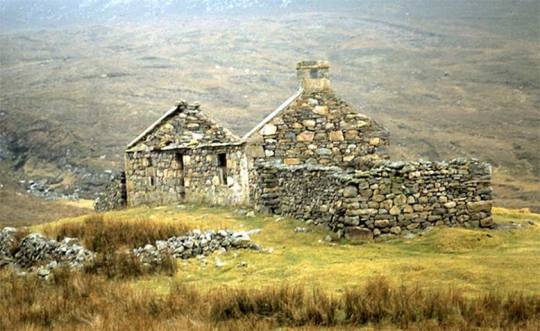
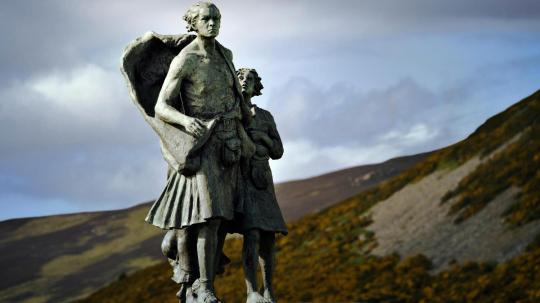


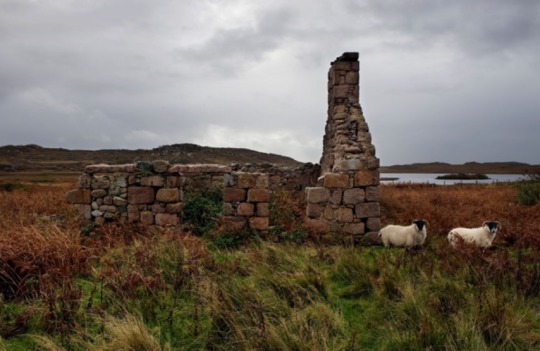
On 15th March 1814 the large scale Sutherland Clearances began.
There are still those out there who push the narrative that the Clearances were natural occurrence, that thousands of families willingly gave up the crofts en masse, leaving crofting settlements that their families had worked and lived in for generations. Ask yourself this, is it likely that the numbers naturally dwindled from a third of Scotland’s population who lived north of the Highland Line; would just fall to the numbers it is today of just five percent? This was a systematic attempt to rid the country of troublesome Highlanders after the Jacobite Uprisings that continued for decades.
In 1811 there were 250,000 sheep there; by the 1840s there were almost a million. Within that period sheep replaced people driven from their homes by direct eviction or through hunger and destitution. After the sheep and over-grazing came deer and the creation of hunting grounds for the elite. By 1884 a tenth of Scotland’s land was given over to deer forests, greater than the size of Wales, and taking up the great majority of the land in the crofting counties (crofts were the small plots of land available to the remaining population)
The eviction of whole communities from Sutherland was done a scale not seen before, or again, during the Highland Clearances.
Families were moved off land to make way for large-scale sheep farming.
Starting in the late 18th Century and running into the 19th Century, the Highland Clearances saw townships occupied by generations of families cleared to make way for large-scale sheep farming and the rearing of deer.
Landowners were seeking to "improve" their estates in line with the industrial revolution.
In some cases people who had lived on the land for generations left voluntarily, while others were forcibly evicted and their homes burned and demolished.
Highlanders did try and fight the movement that saw their ancestral lands given over to sheep farming, 26 years previously and sheep were targeted in 1792 - which became known asBiadna nan Caorach (The Year of the Sheep) - following clearances in Sutherland and Easter Ross.
Four hundred men from families that had been evicted, or were facing eviction, drove thousands of the animals from the hills.
By early August, they had rounded up 6,000 sheep and had reached Beauly, near Inverness, where they were intercepted by soldiers.
Some of the men were tried in court and one man received an order banishing him from Scotland for life.
In the final decades of the 18th century some 200,000 were cleared to make way for sheep.
It wasn't only English landlords that were against the Highlanders, Scots in the Lowlands, perhaps spoon-fed on propaganda about the Uprisings were as much part of the rhetoric that something had to be done about this quarrelsome people.
A young journalist sent by the “Scotsman” to the Highlands exhibited the this while, writing in 1847 he said, that the Highlanders were “an inferior race to the Lowland Saxon.” Robert Knox, the Edinburgh surgeon who bought the bodies from the West Port murderers Burke and Hare believed in the superiority of the “Anglo-Saxon race” and wrote that the Highlanders “must be forced from the soil.”
Then there were the landlords factors, the most hated of whom was another Lowlander called Patrick Sellar , he regarded the Highlanders as racial degenerates. In his racist view they were, “the aborigines of Britain shut out from any general stream of knowledge… ”
Sellar was charged with murder for burning down an old woman’s house, a hand-picked jury of landowners found him not-guilty, but he had brought bad publicity to the Sutherland Estate and lost his job.
James Loch was an Edinburgh lawyer who for 40 years, from 1812, was commissioner for the Marquis of Stafford. He would write an apology for his employers but his racism towards their tenants was never far from the surface, with him complaining:
“… [their] habits and ideas, quite incompatible with the customs of regular society, and civilised life, adding greatly to those defects which characterise persons living in a loose and unformed state of society.” His concern was to provide wool for the “staple manufactory of England” and to convert the people to “the habits of regular and continued industry.
In 1846 matters became desperate as the potato blight brought the likelihood of famine to the Highlands. In response Charles Trevelyan, Under Secretary at the Treasury, wrote: “The people cannot, under any circumstances, be allowed to starve.” Two years later he did the opposite in Ireland, letting hundreds of thousands die. Arguing the famine there was “a mechanism for reducing surplus population.
Yet, as starvation became apparent the British government did intervene to feed the population: just two deaths from starvation are recorded, both on the hard hit population of the Isle of Barra (whose people were largely cleared in 1853 and sent to Quebec). This contrasts with Ireland, where the Great Famine killed thousands. While Ireland was nominally part of the UK it was in reality a colony and seen as separate. The Highlands were regarded by the British government as part of the UK, and starvation could not be permitted there (although emigration was encouraged)
The clearances speak volumes about how capitalism came into being, dripping with blood and at the expense of common people.
There were about 7 million sheep in Scotland nowadays, thats over one for each and every one of us,and estimated to be worth £165m to the economy, according to Scottish Government figures.
Brian McNeil wrote, in his song No Gods and precious few Heroes;
So farewell to the heather and the glen
They cleared us off once and they'd do it all again
For they still prefer sheep to thinking men
Ah, but men who think like sheep are even better
There's nothing much to choose between the old vain and the new
They still don't give a damn for the likes of me and you
Just mind you pay your rent to the factor when it's due
And mind your bloody manners when you pay.....
82 notes
·
View notes
Text

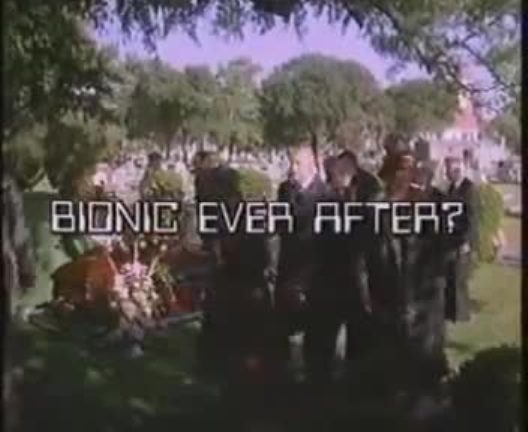









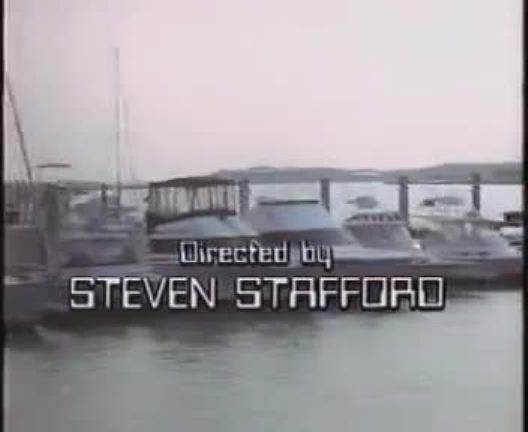
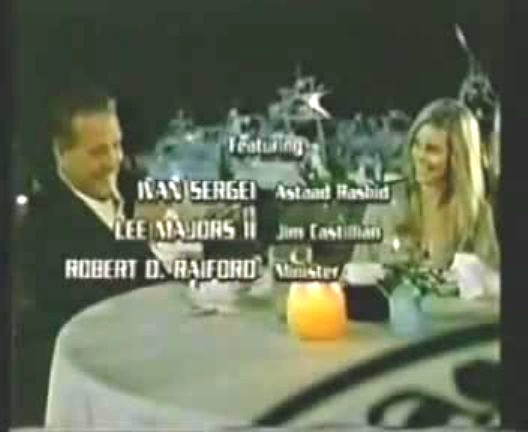



Bionic Ever After - CBS - November 29, 1994
Science Fiction
Running Time:
Stars:
Lee Majors as retired Air Force Colonel Steve Austin
Lindsay Wagner as former tennis pro Jaime Sommers
Richard Anderson as Oscar Goldman
Farrah Forke as Kimberly Harmon / Haviland
Martin E. Brooks as Dr. Rudy Wells
Alan Sader as John MacNamara
Anne Lockhart as Carolyn MacNamara
Geordie Johnson as Miles Kendrick
Featuring:
Ivan Sergei as Astaad Rashid, a charismatic tennis star
Lee Majors II as Jim Castillian, an OSI agent
Robert D. Raiford as Minister
James Shanta as Rock
Michael Hartson as Stone
Ann Pierce as Connie Havilland
Michael Camden Richards as NEC Technician
Shanghai Stafford as Marine Captain
General Fermon Judd, Jr. as Bahamas Policeman
Michael Burgess as Delta Commando
Steffen Foster as Reporter
#Bionic Ever After#TV#CBS#Science Fiction#1990's#1994#Lee Majors#Lindsay Wagner#Richard Anderson#Farrah Forke#Martin E Brooks
11 notes
·
View notes
Text
TYWIN LANNISTER, Lord of Casterly Rock, Warden of the West, Shield of Lannisport,
His wife, [LADY JOANNA], a cousin, died in childbed,
Their children:
SER JAIME, called the Kingslayer, a twin to Cersei,
QUEEN CERSEI, wife of King Robert I Baratheon, a twin to Jaime,
TYRION, called the Imp, a dwarf,
His siblings:
SER KEVAN, his eldest brother,
His wife, DORNA, of House Swyft,
Their eldest son, LANCEL, squire to the king,
Their twin sons, WILLEM and MARTYN,
Their infant daughter, JANEI,
GENNA, his sister, wed to Ser Emmon Frey,
Their son, SER CLEOS FREY,
Their son, TION FREY, a squire,
[SER TYGETT], his second brother, died of a pox,
His widow, DARLESSA, of House Marbrand,
Their son, TYREK, squire to the king,
[GERION], his youngest brother, lost at sea,
His bastard daughter, JOY, a girl of ten,
Their cousin, SER STAFFORD LANNISTER, brother to the late Lady Joanna,
His daughters, CERENNA and MYRIELLE,
His son, SER DAVEN LANNISTER,
His counselor, MAESTER CREYLEN,
His chief knights and lords bannermen:
LORD LEO LEFFORD,
SER ADDAM MARBRAND,
SER GREGOR CLEGANE, the Mountain That Rides,
SER HARYS SWYFT, father by marriage to Ser Kevan,
LORD ANDROS BRAX,
SER FORLEY PRESTER,
SER AMORY LORCH,
VARGO HOAT of the Free City of Qohor, a sellsword.
#a game of thrones#appendix#asoiaf#a song of ice and fire#house lannister#casterly rock#tywin lannister#joanna lannister#jaime lannister#kingslayer#cersei lannister#tyrion lannister#kevan lannister#dorna swyft#lancel lannister#genna lannister#cleos frey#tygett lannister#tyrek lannister#gerion lannister#joy hill#stafford lannister#daven lannister#leo lefford#addam marbrand#gregor clegane#harys swyft#forley prester#amory lorch#vargo hoat
44 notes
·
View notes
Video
jennyouin
avatar premiere + cast & crew screening
2 dreamy nights with some of the most incredible people.
💙
H/MU: @cristinanrose
#avatar#avatarwaysofthewater#avatar2
#Avatar: The Way of Water#social media#video#movie premiere#Jenn Stafford#Trinity Bliss#Jack Champion#Bailey Bass#Duane Wichman Evans Jr.#Kevin Dorman#Courtney Rosemont#Jamie Landau#Steve Brown#Alicia Vela Bailey#Kacie Borrowman#Robert Okumu
10 notes
·
View notes
Text
Albert Blithe
Alex Penkala
Alice
Alton More
Anna
Anthony 'Manimal' Jacks
Antonio 'Poke' Espera
Antonio Garcia
Army Chaplain Teska
Baba Karamanlis
Bernard DeMarco
Bill 'Hoosier' Smith
Bill Leyden
Billy Taylor
Brad 'Iceman' Colbert
Burton Christenson
Capt. Andrew Haldane
Carwood Lipton
Charles (Chuck) Grant
Charles Bean Cruikshank
Charles K. Bailey
Col. Robert Sink
Cpt. Bryan Patterson
Cpt. Craig 'Encino Man' Schwetje
Cpt. Dave 'Captain America' McGraw
Curtis Biddick
Darrell (Shifty) Powers
David Solomon
David Webster
Denver (Bull) Randleman
Donald Hoobler
Dr. Sledge
Edward (Babe) Heffron
Elmo 'Gunny' Haney
Eric Kocher
Eugene Jackson
Eugene Roe
Eugene Sledge
Evan 'Q-Tip' Stafford
Evan 'Scribe' Wright
Everett Blakely
Father John Maloney
Floyd (Tab) Talbert
Frank Murphy
Frank Perconte
Frederick (Moose) Heyliger
Gabe Garza
Gale 'Buck' Cleven
George Luz
Glenn Graham
Gunnery Sgt. Mike 'Gunny' Wynn
Gunnery Sgt. Ray 'Casey Kasem' Griego
Hamm
Harry Crosby
Harry Welsh
Helen
Herbert Sobel
Howard 'Hambone' Hamilton
Jack Kidd
James (Mo) Alley
James Chaffin
James Douglass
James Gibson
James Miller
Jason Lilley
Jean Achten
Jeffrey 'Dirty Earl' Carisalez
John 'Bucky' Egan
John Basilone
John Christeson
John D. Brady
John Fredrick
John Janovec
John Julian
John Martin
Joseph 'Bubbles' Payne
Joseph Liebgott
Joseph Toye
Josh Ray Person
Katherine 'Tatty' Spaatz
Ken Lemmons
Lance Cpl. Harold James Trombley
Larry Shawn 'Pappy' Patrick
Leandro 'Shady B' Baptista
Lena Basilone
Lew 'Chuckler' Juergens
Lewis Nixon
Lt. Edward 'Hillbilly' Jones
Lt. Henry Jones
Lt. Nathaniel Fick
Lt. Thomas Peacock
Lynn (Buck) Compton
Maj. 'Red' Bowman
Maj. John Sixta
Mama Karamanlis
Manuel Rodriguez
Mary Frank Sledge
Meesh
Merriell 'Snafu' Shelton
Navy Hm2 Robert Timothy 'Doc' Bryan
Neil 'Chick' Harding
Norman Dike
Old Man on Bicycle
Patrick O'Keefe
Phyllis
R.V. Burgin
Ralph (Doc) Spina
Renee Lemaire
Richard Winters
Robert 'Rosie' Rosenthal
Robert 'Stormy' Becker
Robert (Popeye) Wynn
Robert Leckie
Rodolfo 'Rudy' Reyes
Ronald Speirs
Roy Claytor
Roy Cobb
Sammy
Sgt. Mallard
Sidney Phillips
Stella Karamanlis
Teren 'T' Holsey
Vera Keller
Walt Hasser
Walter (Smokey) Gordon
Warren (Skip) Muck
Wayne (Skinny) Sisk
Wilbur 'Runner' Conley
William Guarnere
William Hinton
William J. DeBlasio
William Quinn
Winifred 'Pappy' Lewis
7 notes
·
View notes
Text


:: 𝐒𝐄𝐍𝐓𝐄𝐍𝐂𝐄 𝐒𝐓𝐀𝐑𝐓𝐄𝐑𝐒 !


' i invented a world because death is unknowable and someone i loved was about to live there ' ( ramona ausubel )
' because it's mine, i wait for it to die. then i bury it ' ( carrie fountain )
' it's okay. i love you, it's okay ' ( aracelis girmay )
' what's the word for being born of sorrow that isn't yours? ' ( cam awkward-rich )
' we were hungry, and human, and knew exactly what we were doing ' ( ali shapiro )
' what you fear will not go away : it will take you into yourself and bless you and keep you ' ( william stafford )
' it hasn't escaped me that the object that keeps me alive is the same one that will kill me ' ( margartet atwood )
' didn't you have to promise, a hundred times, not to die? ' ( rainer maria rilke )
' i don't remember my youth, do you think that i do? ' ( sheila heti )
' that's how it is for humans, unless and until they are tragic ' ( michael kinnucan )
' those who have died are always in my prayers ' ( nick cave )
' of course the love is there ' ( anne sexton )
' whatever you need. there's no rush ' ( durga chew-bose )
' in the next world, should i remember this one, i will praise it above everything ' ( david ignatow )
' last night i dreamt about you ' ( franz kafka )
' go on, talk to me, please ' ( william carlos williams )
' it's not enough to brace yourself ; eventually you must allow this world to hit you in the face ' ( carrie fountain )
' so what is the fuck is the matter with me? ' ( tony kushner )
' i'm preparing myself for a series of ongoing burials ' ( hanif abdurraqib )
' what sense could there be in that? ' ( anne carson )
' i love you with what in me is unfinished ' ( robert bly )
' i was there. i am always here ' ( summer farah )
' don't tell me your fears. let's just swap our worst pick up lines ' ( ali shapiro )
' i missed sadness because i no longer missed you ' ( paul guest )
' here is the game : today you are not going to die ' ( grant howitt )
' you thought you could make things be a certain way ' ( fleda brown )
' let it hurt. but let me survive ' ( susan sontag )
' i don't know, but you were there and i was there ' ( ada limón )
' i will not do the old things that i've always done ' ( heather havrilesky )
' it was an honor to have loved you ' ( joanna klink )
' i'm not so sure i need to say goodbye anymore ' ( nick cave )
' didn't you wake up feeling that you had no future? ' ( rainer maria rilke )
' there's no such thing as life, it's just catastrophe ' ( anne carson )
' do you think anything else under heaven really matters? ' ( james baldwin )
' why are we equal parts tender and not? ' ( james hoch )
' you will save yourself. you cannot help it ' ( molly brodak )
' we have to put our hands in the earth to make ourselves whole again ' ( robin wall kimmerer )
' i have killed for it and would again ' ( natalie shapero )
' i want to know what is holy ' ( carrie fountain )
' aren't we all disquieted by what we'll leave behind? ' ( durga chew-bose )
' so take me with you as a reminder that this present moment will one day be gone ' ( sheila heti )
' it's not sad at all, any of it ' ( carl phillips )
' i left the last of you to be lost in the fog inside me ' ( paul guest )
' in the whole entire world, you are the only person, the only person i love or have ever loved ' ( tony kushner )
' i could have told you it's all right, it's going to be all right ' ( carmen maria machado )
' you are wasting this life expecting disappointment ' ( eliza griswold )
' it's okay. i think i did what i could ' ( jane mead )
' i don't think we're all meant to save the world all the time ' ( andrew garfield )
' sometimes, when i'm careless, i think survival is easy ' ( ocean vuong )
' i'm satisfied with being. are you? ' ( clarice lispector )
23 notes
·
View notes